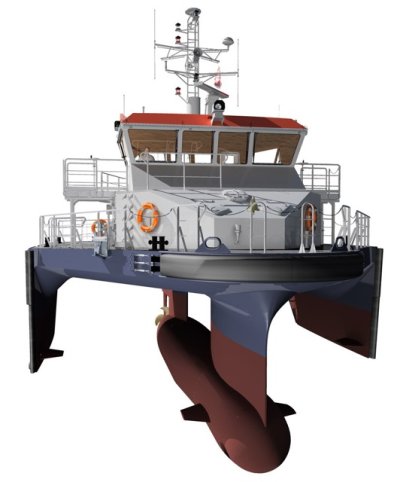The point here is long and skinny are fine for cruising FASTER than most folks are willing to pay for.
A fat boat (think beach ball) will have the least wetted surface and be quite cheap at SL 1.
I disagree with the first point, and agree with the second.
Long and thin boats are very cost effective at higher speeds - thats what is so compelling about them. I'm interested in the Artnautica LRC 58 because of this fact (see details below):
"Starting at $850,000 (New Zealand $, or about $570,000 US) , its affordability is enhanced by the boat's extraordinary fuel economy.
In flat water, lightships, on this 58ft, 14-tonne vessel, we recorded:
• 7.2kts using 0.55 litres diesel per nautical mile
• 8.1kts using 0.67 litres diesel per nautical mile
• 9kts using 0.84 litres diesel per nautical mile.
Different boats will appeal to different people - and thats fine. No boat or design is going to satisfy everyone.
For me - who wants to explore the world in relative comfort and safety -with a focus on the destination, the added speed and seakeeping ability of the longer thinner designs is a big benefit. I'll trade off on the added floor space of the shorter, fatter boats.
I think part of the appeal is also an issue of personality type. I'm used to the fast pace of the technology world / High Tech - and so I really like the aspects of high efficiency and higher speed.
People not in the tech industry might have less of an interest in speed, and newer designs and technology.







